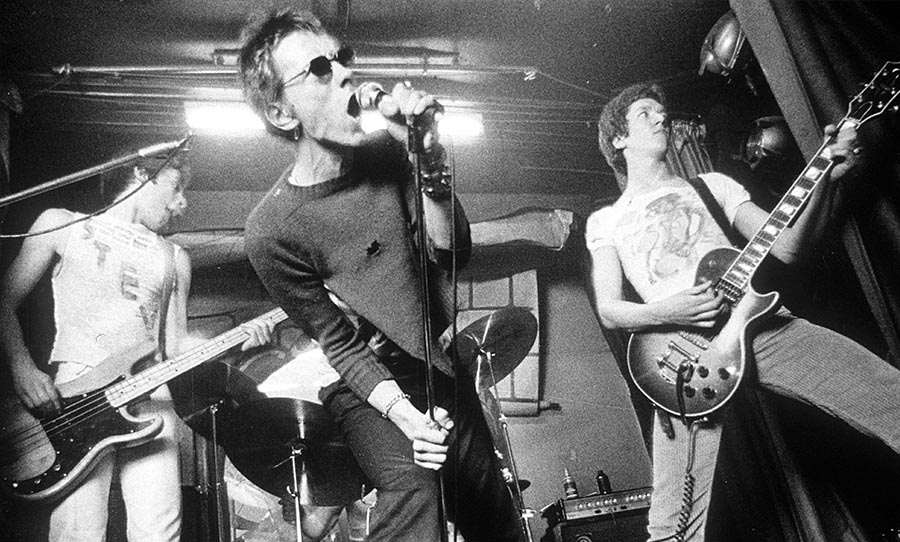Cyclical narratives play a vital role in the music industry’s continued survival, but who programs these trends? More importantly, why do these musical cycles occur?
In 1976, The Sex Pistols conducted a now-infamous interview with Bill Grundy on the Today show. Before all manner of passe profanity, sleazy come-ons and mumbled indignation take place, Grundy introduces the band and the scene which they were credited with jump-starting:
“They are punk rockers, the new craze they tell me”.
He goes on to liken them to a “less clean” version of the Rolling Stones and it becomes clear that he doesn’t believe the hype. In his mind, he’d seen this all before; The Sex Pistols were a pale imitation repackaged as a revolution. The time for rock ‘n roll to resurface had come again and it was nothing to be excited about.
This attitude to all sorts of trends, be it fashion, music or the visual arts, is nothing new. For some time it has been accepted, quite possibly assumed, that what is popular is cyclical, that trends are programmed to appear and disappear like the coming and going of the seasons. However, if this belief is correct then the question remains; who or what is actually responsible for controlling these phases? And indeed, why?
These cyclical narratives play a big role in how the music industry creates an environment that enables it to continually thrive. By creating the appearance of cycles and associations, tastemakers and record labels can add momentum to new ventures, while also creating interest in assets that they already possess.
In the early noughties, in the midst of what some were referring to as a folk-revival, every other lyrically-focused male artist with an acoustic guitar was burdened with the title ‘the new Bob Dylan’. The comparisons were lazy, premature and quite frankly absurd, and usually levelled at an artist with barely a debut album to their name, generally creating anxiety and confusion in the artists themselves. However, many of these new Bob Dylans saw their record sales pick up as a result.
Conor Oberst (AKA Bright Eyes) experienced the best sales of his career with I’m Wide Awake, It’s Morning (2005) and Cassadega (2007), right around the time that various publications dubbed him the prince to Dylan’s throne. This comparison created a narrative that peaked interest in a demographic that had previously never heard of him; your parents. It also served to revive interest in Dylan, this new association introducing him to a younger audience as a revered prophet rather than a retired relic.
Now this all makes sense from the perspective of the music industry at large, who are predominantly interested in selling their products. However, the way that this relates to the average music enthusiast is slightly less straightforward.
Try walking into your local RSL, tapping an old-timer on the shoulder and asking them what they make of the newest fad.
“I’ve seen this shit before”
“Reminds me of The Beatles”
“Bugger off, let me enjoy my weekly slap”
They aren’t wrong. But they certainly aren’t entirely correct either.
Humans regularly look for points of reference when it comes to analysing new stimuli. Spotting similarities between the new and old can provide useful information quickly, with minimal experimentation or thought. This mental shortcut does, however, pose an element of risk. Differences, no matter how subtle, can be hugely important to understanding the true nature of something. The appearance of water and Vodka are similar, but the consequences of consuming a litre of them differ greatly.
It’s endlessly tempting to evaluate a new phenomenon by what preceded it. Not only does it save energy by focusing on similarities, but it allows us to create the appearance of, rather than actual, knowledge and cultural comprehension. However, it’s all kind of bullshit.
If you actually place the music of the ‘originals’ side-by-side with the music that they inspired, the differences are often staggering. This isn’t to downplay the role that past compositions play in shaping the artistic direction of more current artists, however these narratives can belittle the creative process and ignore the way music has developed over human history.
Art has always built upon that which came before it. To simply state a style is coming back into vogue purports that the new progression has added nothing significant to mark it as different. This is untrue, reductionist and ultimately damaging to the development of creativity.
Scenes and cyclical trends exist to foster business; to create a relationship between products that can be marketed together. However, the art that belies these phenomena remains largely separate, although definitely not unaffected. It carries on in the way that art always has; building on top of itself in both subtle and meaningful ways, often in response to new societal and cultural developments.
To see otherwise is the consequence of not looking closely enough.



